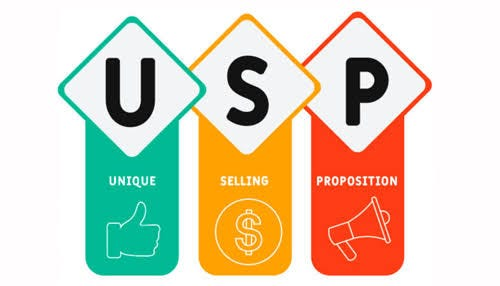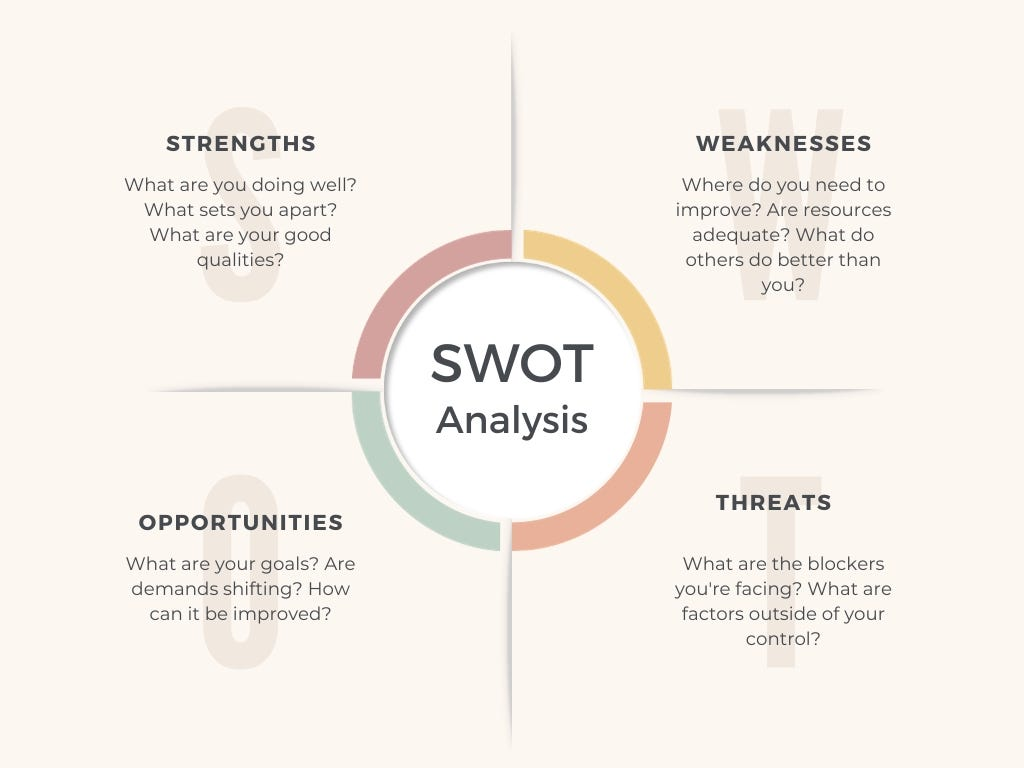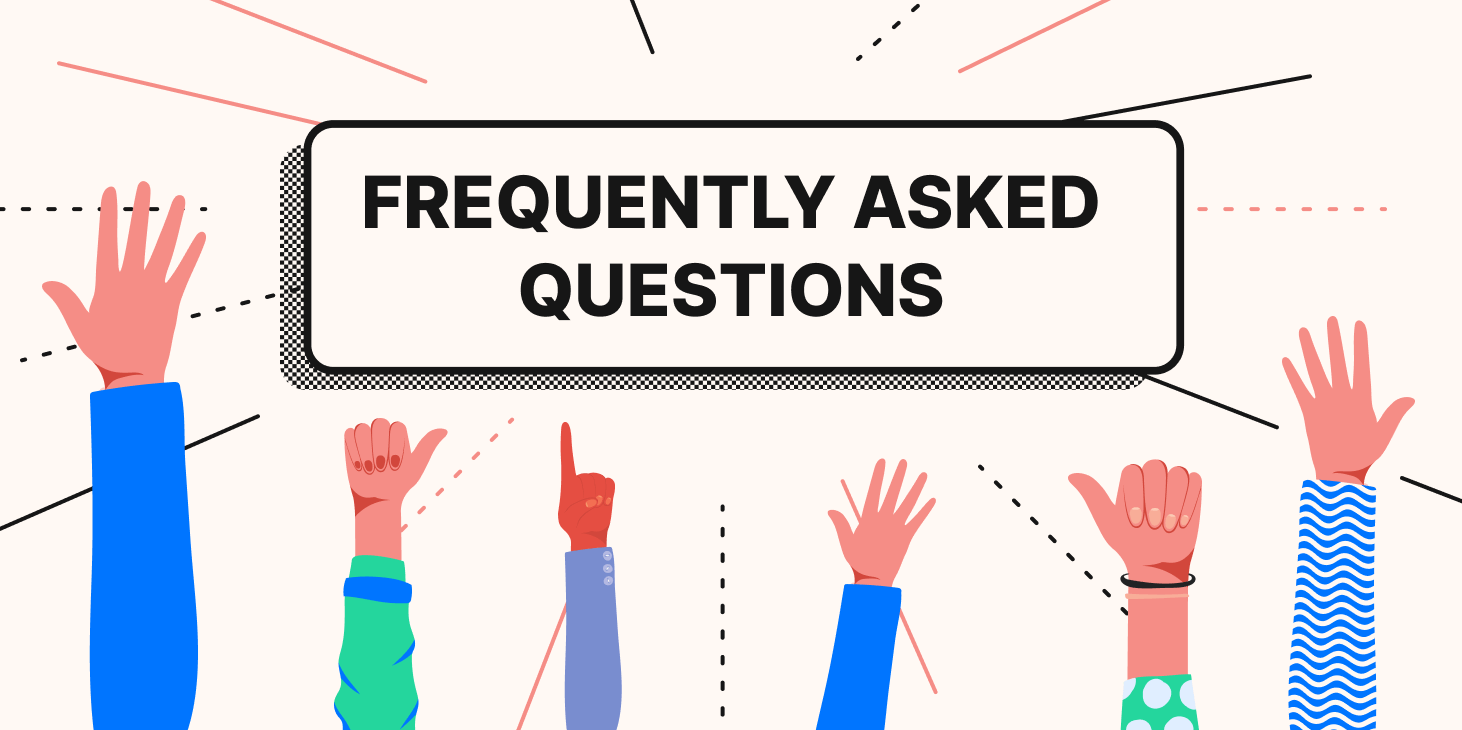17 min to read
In an increasingly competitive business environment, maintaining a strong brand presence is key to staying ahead. A robust brand can create a lasting impression in the minds of consumers, driving loyalty, recognition, and ultimately, growth for your business. The following guide will provide a series of essential tips that will help you maximize brand awareness, strategically position your business in your consumer's minds, and boost your market presence to new heights.

Understand Your Target Audience
Understanding your target audience lays the groundwork for any successful brand strategy. It demands thorough research to pinpoint the preferences, habits, and needs of your potential customers. This includes their demographic details, lifestyle, purchasing habits, and even their pain points. By doing this, you can tailor your brand messaging to resonate deeply with them.
Building customer personas can be an effective method to encapsulate this information. These detailed profiles of your ideal customers can serve as a reference point for all branding efforts, providing a cohesive vision of who you are trying to reach. Remember, a well-defined target audience is the cornerstone of a compelling brand presence.
Engaging with your audience directly through surveys, social media, or face-to-face interactions can provide invaluable insights. These real-life conversations can reveal patterns and preferences that quantitative data alone might miss, adding a layer of depth to your understanding of your audience.
With the explosion of data and the advancement of analytics, we now have more insights at our disposal than ever before. This wealth of information enables marketers to craft strategies that are not only effective but also highly personalized, resonating deeply with the intended audience.
Tools and Methodologies for Audience Understanding
- Data Management Platforms (DMPs): These platforms collect and analyze large sets of data from various sources. DMPs provide insights into customer behavior and preferences, allowing marketers to create more targeted and personalized campaigns. For instance, a DMP might reveal that a significant portion of your audience prefers mobile engagement over desktop, steering your campaign towards mobile optimization.
- Programmatic Media Buying: Utilizing advanced algorithms, programmatic media buying allows for the automatic purchase of ad space, targeting specific audiences based on their online behavior and demographic information. This method ensures that your marketing efforts are reaching the most relevant audience, increasing the likelihood of engagement and conversion.
-
Customer Relationship Management (CRM) Tools: CRM tools help in understanding and managing customer interactions. By analyzing past purchase history, communication, and engagement, CRM tools can provide invaluable insights into customer preferences and tendencies.
-
Predictive Analytics: This involves using data, statistical algorithms, and machine learning techniques to identify the likelihood of future outcomes based on historical data. It’s a sophisticated approach that can forecast customer behavior and purchasing patterns, enabling businesses to tailor their marketing strategies accordingly. For example, by analyzing past purchase behavior, a business can predict which products a customer is likely to buy next and when, allowing for timely and relevant marketing communication.
-
Social Media Analytics: Platforms like Facebook, Instagram, and Twitter offer a goldmine of data about your audience. By analyzing engagement rates, shares, comments, and demographic information, marketers can gain insights into what content resonates with their audience, and tailor their strategies to match these preferences.
-
Survey Tools and Customer Feedback: Direct feedback from customers through surveys or feedback tools can provide actionable insights. This first-hand information is invaluable for understanding customer needs and improving products or services.
Examples and Case Studies
-
A travel agency employed predictive analytics to offer personalized travel packages. By analyzing past booking data, they were able to suggest destinations and experiences that aligned with individual customer preferences, resulting in a 25% uplift in booking rates.
-
A retail company used a DMP to segment its audience based on purchasing behavior, which revealed a high demand for eco-friendly products among their younger consumers. This insight led to a targeted campaign for sustainable products, resulting in a 30% increase in sales within that segment.

Create a Unique Value Proposition
A unique value proposition (UVP) sets your brand apart by clearly communicating what makes you different and better than the competition. It should be concise, memorable, and directly address a key consumer need or want. A compelling UVP can make potential customers perceive your brand as the superior choice.
Consider the core benefits that your product or service offers. Then, think about how these benefits fulfill a unique need for your customers. This will help you define what sets your brand apart. It's also important to communicate this differentiation clearly across all channels, from your website to your social media platforms.
Your UVP should evolve with the changing market landscape and customer needs. Keep an eye on industry trends and customer feedback to ensure your UVP remains relevant and compelling. It's not a one-and-done task - refining your UVP is a continuous process that can keep your brand sharp and competitive. By employing a pr freelancer for small businesses, you can get professional help in crafting and refining your UVP to maximize its effectiveness. Not only can they offer a fresh perspective, but their expertise can also help you craft a UVP that truly resonates with your target audience.
Online Tools for Building a USP
- Market Research Tools: Platforms like Google Trends, SEMrush, and Ahrefs provide insights into what your target audience is searching for and the keywords your competitors are using. These tools can help you understand market demands and identify gaps your USP can address.
- Customer Feedback Tools: Tools such as SurveyMonkey and Typeform allow you to collect customer feedback effectively. Understanding your customers' needs and pain points is crucial for crafting a USP that resonates.
-
Competitor Analysis Tools: Tools like BuzzSumo and SpyFu offer insights into your competitors' content and SEO strategies. Analyzing what your competitors are doing well – and not so well – can help you find a unique angle for your USP.
-
Social Listening Tools: Platforms like Brand24 and Hootsuite Insights help in understanding the sentiment around your brand and competitors. This real-time data is invaluable in shaping a USP that aligns with customer attitudes and perceptions.
Methodologies for Crafting a USP

- SWOT Analysis: This involves identifying your Strengths, Weaknesses, Opportunities, and Threats. By understanding these elements, you can pinpoint what makes your offer unique and how to position it against competitors.
- Value Proposition Canvas: This tool helps you understand your customer's needs and create a value proposition that speaks directly to those needs. It's about aligning what you offer with what your customer values most.
-
The Five Whys Technique: By asking 'why' repeatedly (typically five times), you delve deeper into the reasons behind a customer's need or a problem your product solves, helping to uncover a more profound and unique value proposition.
Examples of Effective USPs
-
Evernote's USP, "Remember Everything," effectively communicates the core benefit of their product – helping users keep track of all their notes and information in one place.
-
Dollar Shave Club revolutionized the grooming industry with its simple USP: "Shave Time. Shave Money." This catchy phrase encapsulated their value proposition – high-quality razors delivered to your door at a low cost.
Leverage Social Media
Social media platforms offer a golden opportunity for brands to increase awareness and engage with a wider audience. By creating engaging content and promoting it on the appropriate platforms, you can reach potential customers where they’re most active. First, choose the right social media platforms. Not all platforms will be relevant to your brand or your target audience. Understanding where your audience spends their time online will help you focus your efforts effectively.
Develop a content strategy. This should align with your brand voice and values, and offer value to your audience. This could be through informative content, entertaining videos, or thought-provoking discussions. Remember, social media is a two-way street - make sure to engage with your followers by responding to comments and direct messages.
Keep in mind that social media is constantly evolving, so stay up to date with new features and trends. For instance, Instagram Stories have become a popular way for brands to engage with their audience more authentically and casually. Don't be afraid to experiment and find what works best for your brand. Social media is a powerful tool for increasing brand awareness. With billions of users across various platforms, it offers unprecedented reach and engagement opportunities. However, to effectively leverage this medium, it’s crucial to employ the right tools and methodologies.
Online Tools for Enhancing Social Media Brand Awareness
- Social Media Management Tools: Platforms like Hootsuite, Buffer, and Sprout Social allow you to schedule posts, manage multiple accounts, and analyze social media metrics. These tools streamline the process of managing your social media presence and provide valuable insights into audience engagement and preferences.
- Content Creation Tools: Tools such as Canva, Adobe Spark, and Crello help create visually appealing content for your social media channels. Attractive and high-quality visuals are crucial for capturing attention and enhancing brand recall.
-
Analytics and Monitoring Tools: Google Analytics, BuzzSumo, and Brand24 offer insights into how your content is performing and how audiences are engaging with your brand. These tools can track metrics such as reach, engagement, and conversions, guiding your strategy.
-
Influencer Marketing Platforms: Platforms like Upfluence, AspireIQ, and Traackr help you identify and collaborate with influencers who can amplify your brand’s message to a larger audience.
Methodologies for Using Social Media to Increase Brand Awareness
- Consistent Brand Messaging: Ensure that your social media profiles and content consistently reflect your brand’s voice, values, and style. This consistency helps in building brand recognition and loyalty.
- Engagement Strategy: Engaging with your audience through comments, direct messages, and social listening is key. This interaction not only builds relationships but also increases the likelihood of your content being shared, further boosting brand awareness.
-
Content Diversification: Utilize a mix of content types - images, videos, infographics, and live streams. This variety can cater to different audience preferences, increasing engagement rates.
-
Hashtag Strategy: Using relevant and branded hashtags can increase the visibility of your posts to a wider audience, beyond your current followers.
-
User-Generated Content (UGC): Encourage your audience to share content related to your brand. UGC acts as social proof and can significantly enhance trust and brand awareness.
Examples of Successful Social Media Brand Awareness Campaigns
-
GoPro: Known for leveraging UGC, GoPro encourages its users to share their adventure videos shot with their cameras. This strategy not only showcases their product capabilities but also builds a community around the brand.
-
Airbnb: Through their #LiveThere campaign, Airbnb used Instagram to share stories of real travelers living in Airbnb rentals around the world. This approach effectively humanized the brand and showcased the unique experiences Airbnb offers, different from traditional hotel stays.
- Spotify: Spotify’s end-of-year “Wrapped” campaign, where users are encouraged to share their personalized music listening stats on social media, successfully creates a buzz each year. This campaign not only engages existing users but also attracts potential customers through widespread social sharing.
The Role of AI in Social Media Brand Awareness
Artificial Intelligence (AI) is changing the landscape of social media marketing. AI tools can analyze large volumes of social media data to identify trends, track brand mentions, and understand audience sentiment. This data can inform more targeted and effective content strategies. For example, AI-powered analytics can reveal the optimal times for posting, the types of content that resonate with your audience, and even predict emerging trends, allowing brands to stay ahead of the curve.
Invest in SEO
Search engine optimization (SEO) is a powerful tool for increasing your brand's online visibility. When implemented correctly, SEO can help your business appear in relevant search results, driving organic traffic to your website. Start by conducting keyword research to discover which terms and phrases your target audience is using to find businesses like yours. These keywords should be incorporated into your website's content to improve its chances of ranking in search results.
On-page SEO tactics, such as optimizing title tags, meta descriptions, and images, can also enhance your visibility in search results. Additionally, consider off-page SEO strategies like building high-quality backlinks and promoting your content on social media. These efforts can help boost your brand's authority and credibility, making it appear more trustworthy to search engines.
Form Strategic Partnerships
Forming strategic partnerships can be a powerful way to expand your brand's reach. By collaborating with businesses that complement yours, you can tap into their audience and offer mutual benefits. When considering potential partners, look for businesses that share your brand values and have a customer base that aligns with your target audience.
This will ensure that the partnership feels authentic to both parties' followers. Once a partnership is established, collaborate on marketing efforts. This could include joint events, co-branded products, or promotional campaigns. Not only can this boost brand awareness, but it also adds value for your customers.
Monitor and Adapt
The business landscape is constantly changing, so it’s essential to keep an eye on industry trends, competitor activities, and consumer behavior. Regularly reviewing and updating your brand strategy ensures it remains effective and relevant. Monitoring your brand’s online reputation is critical. Positive reviews and testimonials can significantly enhance your brand image, while negative feedback offers an opportunity to improve.
Actively respond to feedback and resolve issues promptly and professionally. Don't be afraid to adapt and evolve your brand strategy as needed. Market trends, customer needs, and even global events can shift the business landscape dramatically. A flexible brand strategy can weather these changes and keep your brand strong and relevant.

Bolstering your brand's presence is crucial in staying competitive and achieving business growth. By understanding your audience, crafting a unique value proposition, leveraging social media, investing in SEO, forming strategic partnerships, and staying adaptable, you can amplify your brand's reach and resonance.
Remember, building a formidable brand is not a one-time event but an ongoing process. Stay connected to your audience, keep up with the trends, and continuously refine your strategies. Your brand is more than just a logo or a tagline; it's a promise to your customers. Make it count, make it memorable.

Codedesign Team Answers to Frequently asked questions (FAQ)
Can small businesses benefit from programmatic media buying?
Absolutely. Programmatic media buying levels the playing field, allowing small businesses to compete with larger ones by targeting specific audiences with precision. For instance, a local café can target coffee enthusiasts within a certain radius, ensuring their ads are seen by those most likely to visit. We assisted a local bakery in leveraging programmatic media, which resulted in a 50% increase in foot traffic attributed to online ads.
How accurate are predictive analytics in forecasting customer behavior?
Predictive analytics, when properly implemented, can be highly accurate. It involves analyzing large data sets to forecast future behavior based on past patterns. For a consumer electronics company, we used predictive analytics to forecast sales trends, which helped them adjust their inventory and marketing strategies, resulting in a 20% increase in sales efficiency.
What's the significance of social media analytics in understanding my audience? Social media analytics are crucial for understanding the sentiments, preferences, and behaviors of your audience. For example, we used social media analytics for a beauty brand to understand the preferred types of content and products among their audience, which guided their content strategy and led to a 35% increase in social media engagement.
How can AI enhance customer experience and engagement?
AI can personalize customer interactions at scale, providing a unique experience for each user. For instance, AI-driven chatbots can offer tailored recommendations and support, improving customer satisfaction. We integrated AI chatbots for an e-commerce client, which resulted in a 40% reduction in customer service response time and a significant improvement in customer satisfaction scores.
How can AI tools specifically aid in creating a compelling USP?
AI tools can process and analyze vast amounts of data to uncover unique insights about customer preferences and market trends. For example, AI-driven sentiment analysis can reveal subtle shifts in consumer attitudes, enabling businesses to tailor their USP to these changing preferences. In a project for a tech startup, we utilized AI to analyze customer feedback, which led to the creation of a USP focused on user-friendly technology, differentiating the brand in a market dominated by complex solutions.
Can small businesses without large data sets still benefit from these tools and methodologies?
Absolutely. Small businesses can leverage these tools and methodologies on a scale appropriate to their operations. For instance, using customer feedback tools like SurveyMonkey for direct customer insights can be incredibly effective for small-scale operations. We worked with a local artisan bakery to refine their USP using customer feedback, focusing on their unique handcrafted techniques and organic ingredients, which significantly increased their local market share.
How important is competitor analysis in forming a USP?
Competitor analysis is crucial as it helps you understand what is already being offered in the market and identifies areas where you can differentiate. For instance, if competitors are focusing on cost, you might find an opportunity in emphasizing superior quality or customer service. We assisted a client in the e-commerce sector by using competitor analysis tools to identify a gap in personalized customer service, which they then incorporated into their USP, resulting in a 20% increase in customer retention.
Is there a risk of a USP becoming irrelevant over time? How can this be addressed?
Yes, market dynamics and consumer preferences evolve, so a USP can become outdated. Continuous market research and staying attuned to customer feedback are essential. AI tools can be particularly useful here, offering ongoing insights into market trends and consumer behavior. For a fashion retail client, we established a process of periodic market analysis using AI tools, which helped them adapt their USP to changing fashion trends and consumer preferences.
How does a Value Proposition Canvas differ from a traditional USP approach?
The Value Proposition Canvas is more customer-centric, focusing on understanding the customer's needs, pains, and gains in great detail. It helps in aligning your product's features with these customer insights. This method can reveal deeper insights compared to a traditional USP approach, which might focus more on product features or company strengths. For a healthcare client, using the Value Proposition Canvas revealed an unmet need for personalized care, which they then used to develop a USP centered around customized health plans.
How can small businesses with limited budgets effectively increase brand awareness on social media?
Small businesses can focus on creating authentic, high-quality content that resonates with their target audience. Engaging directly with followers, leveraging local hashtags, and collaborating with micro-influencers are cost-effective strategies. We worked with a small cafe that increased its brand awareness significantly by engaging with local food bloggers and sharing behind-the-scenes content that showcased their unique offerings and community involvement.
What metrics should be prioritized when measuring social media brand awareness?
Key metrics include reach, engagement (likes, comments, shares), follower growth, and brand mentions. These metrics provide insights into how far your content is spreading and how much it resonates with audiences. For a fashion brand we advised, focusing on engagement and brand mentions led to a more targeted content strategy that boosted their overall brand visibility.
How important is video content in social media brand awareness strategies?
Video content is highly engaging and can significantly increase brand visibility and recall. Platforms like Instagram Reels, TikTok, and YouTube are ideal for sharing video content. We assisted a tech startup in leveraging short, informative videos on these platforms, resulting in a 50% increase in their social media engagement.
Can influencer collaborations always guarantee increased brand awareness?
While influencer collaborations can be effective, they must be strategic. Choosing influencers whose followers align with your target audience and whose values resonate with your brand is crucial. A beauty brand we worked with saw a substantial increase in brand awareness by collaborating with influencers who authentically used and endorsed their products.
How can brands ensure consistency in their social media messaging?
Developing a clear brand guideline that outlines your brand’s voice, tone, and visual style is essential. Regularly reviewing content before posting to ensure alignment with these guidelines is also key. We guided a lifestyle brand in creating a comprehensive social media style guide, which helped maintain a consistent and recognizable brand presence across platforms.
FAQS - Frequently Asked Questions
How can I understand my target audience more effectively for branding?
Understanding your target audience more effectively for branding requires a multifaceted approach that combines data analytics, customer feedback, and market research. It's essential to delve into the demographics, psychographics, and behavioral patterns of your potential customers. Tools like Google Analytics and social media insights provide a wealth of information on user behavior and preferences. For instance, Codedesign has leveraged advanced data analytics to segment audiences accurately, ensuring that marketing efforts resonate with the intended demographic. Additionally, engaging directly with your audience through surveys or feedback forms can yield invaluable qualitative insights, enabling a deeper understanding of their needs, preferences, and pain points.
What are some effective tools and methodologies for audience analysis?
Effective tools and methodologies for audience analysis encompass a blend of quantitative and qualitative research tools. Google Analytics, Facebook Insights, and similar platforms offer comprehensive data on user engagement, demographics, and behavior online. These tools enable marketers to segment their audience based on various criteria, such as age, location, interests, and online behavior, providing a granular view of their target market. Additionally, employing customer relationship management (CRM) systems can help track customer interactions and feedback, offering insights into customer preferences and behavior over time. Codedesign, for instance, has successfully utilized these tools to tailor marketing strategies that align with the audience's evolving needs.
How do I create a unique value proposition for my brand?
Creating a unique value proposition (UVP) for your brand involves identifying and articulating what makes your offering distinct and valuable to your target audience. Start by conducting a thorough market analysis to understand your competition and identify gaps in the market. Then, focus on your brand's strengths, innovations, or unique benefits that address those gaps. It's crucial to align your UVP with your audience's needs, desires, and pain points, ensuring that it resonates with them on a personal level. For example, Codedesign has differentiated itself by emphasizing its expertise in advanced digital marketing strategy and programmatic media, appealing to businesses looking for cutting-edge marketing solutions. The key is to communicate your UVP clearly and consistently across all marketing channels to build a strong brand identity.
What are some online tools that can help in building a compelling USP?
Several online tools can aid in building a compelling Unique Selling Proposition (USP). Tools like SurveyMonkey or Google Forms can be used to gather customer feedback and insights, which are crucial for understanding what sets your brand apart in the eyes of your customers. Keyword research tools such as SEMrush or Google Keyword Planner can help identify the unique aspects of your products or services that potential customers are searching for online. Additionally, competitive analysis tools like SpyFu or BuzzSumo allow you to understand how competitors position themselves and find opportunities to differentiate your brand. Incorporating these insights into your USP can make it more compelling and relevant to your target audience.
How can social media be used to increase brand awareness?
Social media can be an exceptionally effective channel for increasing brand awareness due to its widespread reach and the ability to engage directly with the audience. By creating shareable, relevant content that resonates with your target demographic, you can significantly enhance your brand's visibility. Strategies such as leveraging trending hashtags, participating in or initiating conversations around topics related to your brand, and using visually appealing content like videos and infographics can drive engagement and spread brand awareness. Additionally, social media platforms offer targeted advertising options, allowing brands to reach specific segments of their audience more effectively. Codedesign, for instance, has successfully increased brand awareness for its clients by implementing targeted social media campaigns that capitalize on each platform's unique features and audience.
What are the best practices for leveraging social media for brand promotion?
Best practices for leveraging social media for brand promotion include consistently posting high-quality, engaging content tailored to each platform's audience and format. Engaging directly with followers through comments, messages, and interactive content like polls or live videos can foster a sense of community and loyalty around your brand. Utilizing targeted ads to reach specific demographics and interests effectively increases visibility among potential customers. Additionally, collaborating with influencers who resonate with your target audience can extend your reach and add credibility to your brand. Monitoring metrics such as engagement rates, follower growth, and conversion rates is crucial for understanding the effectiveness of your strategies and making data-driven adjustments.
How important is SEO in boosting my brand's online visibility?
SEO is critically important in boosting a brand's online visibility. It enhances the likelihood of your website appearing at the top of search engine results for relevant keywords, significantly increasing traffic and exposure to your target audience. Effective SEO strategies involve optimizing website content for keywords, improving site speed and mobile responsiveness, and building high-quality backlinks. Additionally, local SEO tactics can help businesses attract more customers from their immediate geographic area. By consistently applying SEO best practices, brands can maintain a competitive edge in digital spaces, ensuring they remain visible and accessible to potential customers. Codedesign, for example, has helped numerous clients improve their online visibility and organic reach through tailored SEO strategies.
What are the benefits of forming strategic partnerships for brand enhancement?
Forming strategic partnerships can significantly enhance a brand by expanding its reach, adding value to its offerings, and building its credibility. Partnerships with other businesses or influencers can open up new distribution channels, allowing brands to tap into their partners' audiences. This can lead to increased brand awareness and customer base growth. Moreover, collaborations can result in the creation of unique products or services that combine the strengths and capabilities of both partners, offering customers something new and valuable. Additionally, being associated with well-established brands or respected influencers can enhance a brand's reputation and trustworthiness in the eyes of consumers.
How often should I monitor and adapt my brand strategy to stay relevant?
Monitoring and adapting your brand strategy should be an ongoing process to ensure your brand remains relevant and competitive. The digital marketing landscape is continuously evolving, with consumer preferences and online trends changing rapidly. It's advisable to conduct regular analyses of your brand's performance across various channels, including social media metrics, website traffic, and conversion rates, to identify areas for improvement. Additionally, keeping an eye on industry trends and competitor strategies can provide insights into necessary adjustments. Ideally, a comprehensive review of your brand strategy should occur at least quarterly, with minor adjustments made more frequently based on real-time data and feedback.
Can small businesses benefit from the strategies mentioned in the article?
Absolutely, small businesses can significantly benefit from the strategies mentioned, as they are scalable and adaptable to different budgets and capacities. Digital marketing tools and platforms offer cost-effective solutions for brand promotion, audience engagement, and market analysis. Small businesses can leverage social media to build brand awareness and connect with customers, apply SEO best practices to enhance online visibility, and use customer feedback to refine their unique value propositions. Strategic partnerships can also be a powerful way for small businesses to expand their reach and resources. By focusing on strategies that align with their specific goals and audience, small businesses can achieve substantial growth and success in the digital marketplace.

About Bruno GavinoBruno Gavino is the CEO and partner of Codedesign, a digital marketing agency with a strong international presence. Based in Lisbon, Portugal, with offices in Boston, Singapore, and Manchester (UK) Codedesign has been recognized as one of the top interactive agencies and eCommerce agencies. Awarded Top B2B Company in Europe and Top B2C company in retail, Codedesign aims to foster personal relationships with clients and create a positive work environment for its team. He emphasizes the need for digital agencies to focus on data optimization and performance to meet the increasingly results-driven demands of clients. His experience in digital marketing, combined with a unique background that includes engineering and data, contributes to his effective and multifaceted leadership style. |

About CodedesignCodedesign is a digital marketing agency with a strong multicultural and international presence, offering expert services in digital marketing. Our digital agency in Lisbon, Boston, and Manchester enables us to provide market-ready strategies that suit a wide range of clients across the globe (both B2B and B2C). We specialize in creating impactful online experiences, focusing on making your digital presence strong and efficient. Our approach is straightforward and effective, ensuring that every client receives a personalized service that truly meets their needs. Our digital agency is committed to using the latest data and technology to help your business stand out. Whether you're looking to increase your online visibility, connect better with your audience, get more leads, or grow your online sales. For more information, read our Digital Strategy Blog or to start your journey with us, please feel free to contact us. |
CodeDesign is leading:
- Digital Agency
- Digital Marketing Agency
- Digital Ecommerce Agency
- Amazon Marketing Agency



Add comment ×